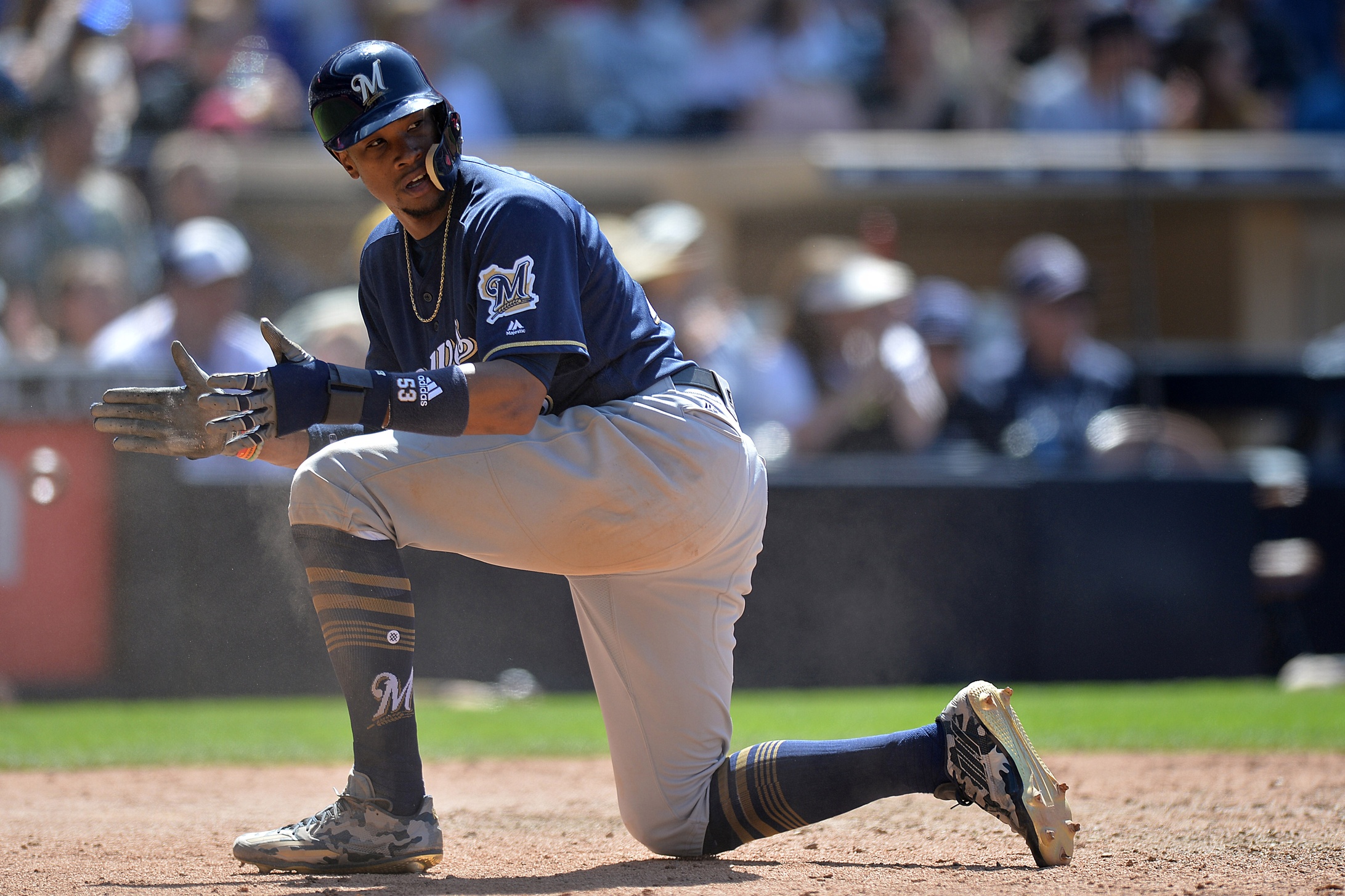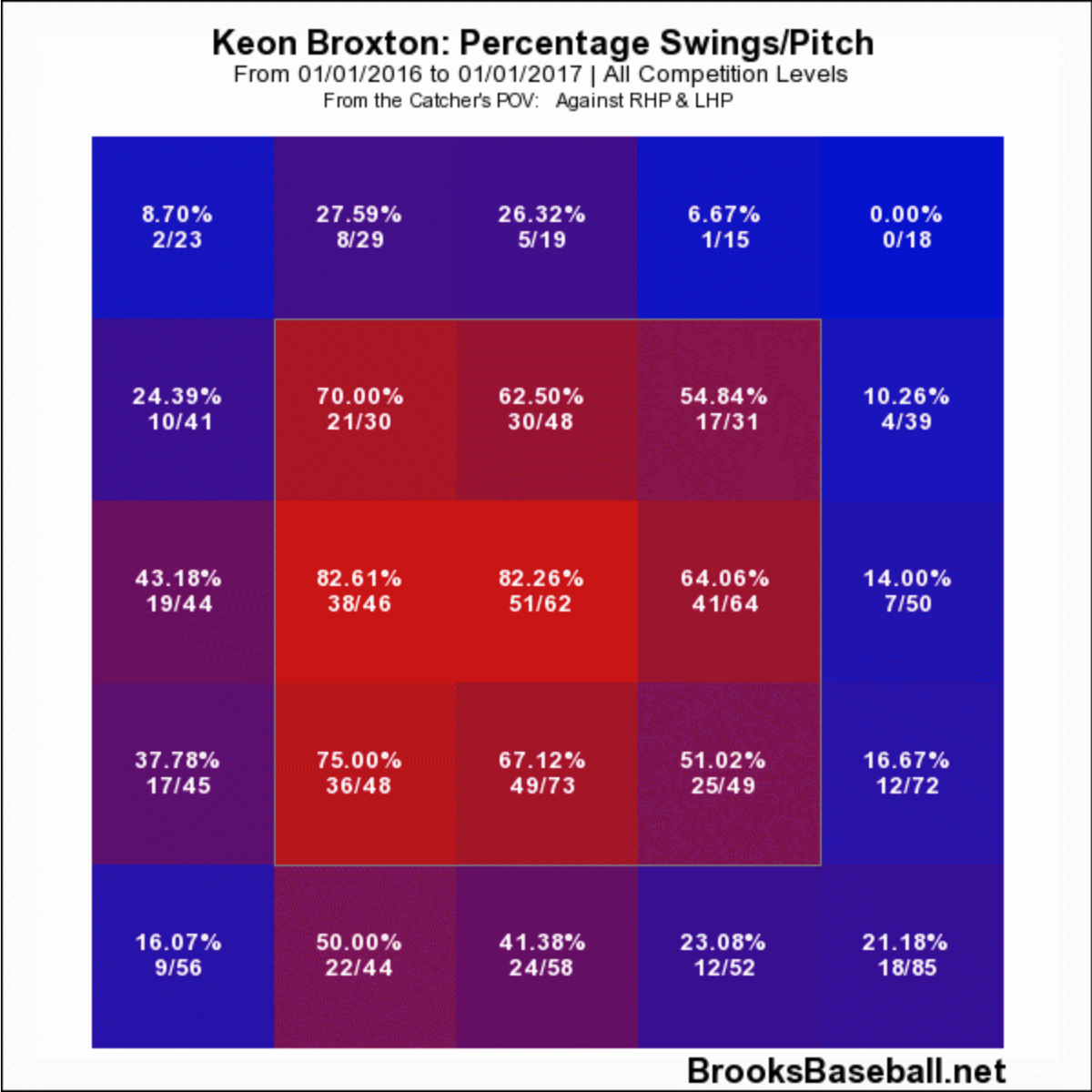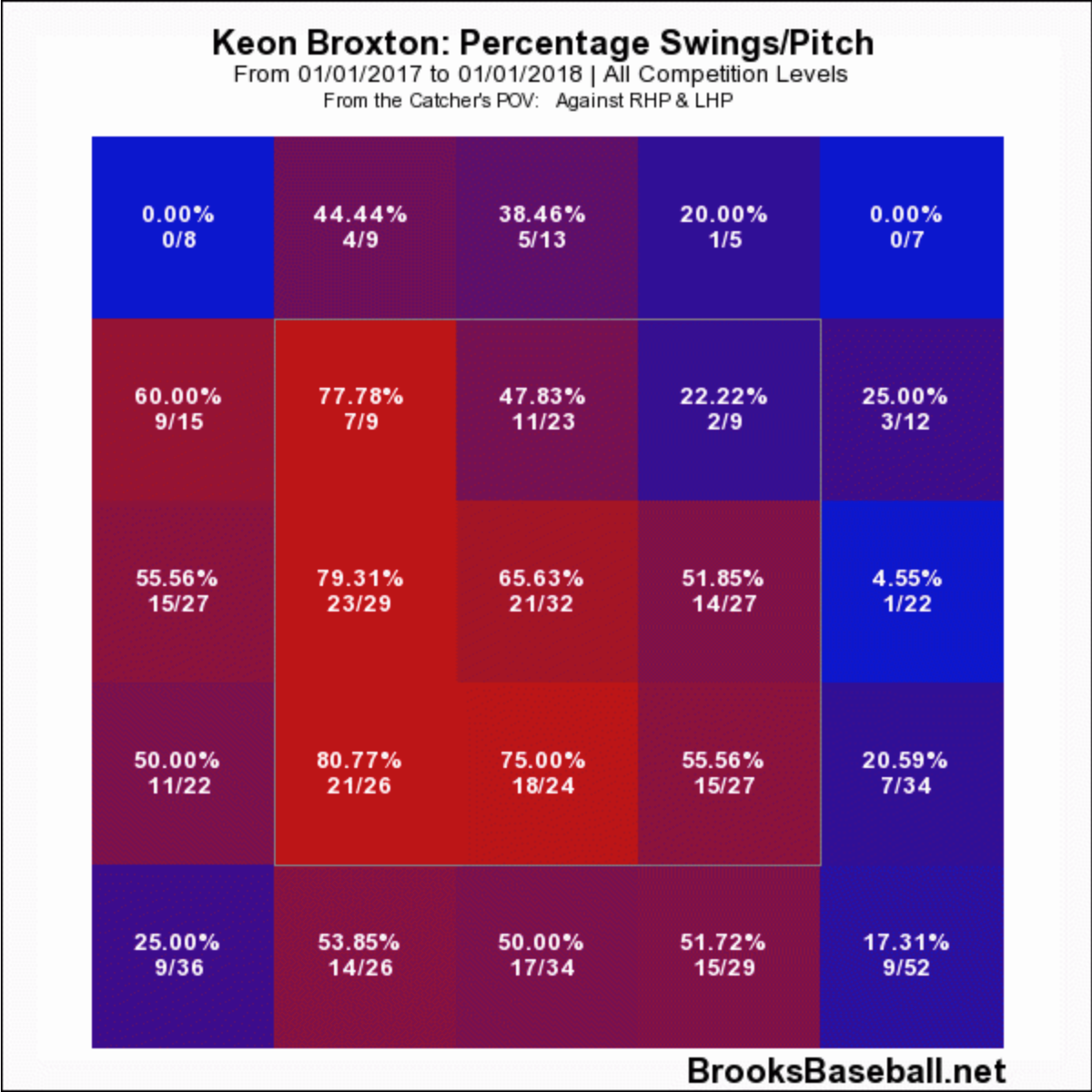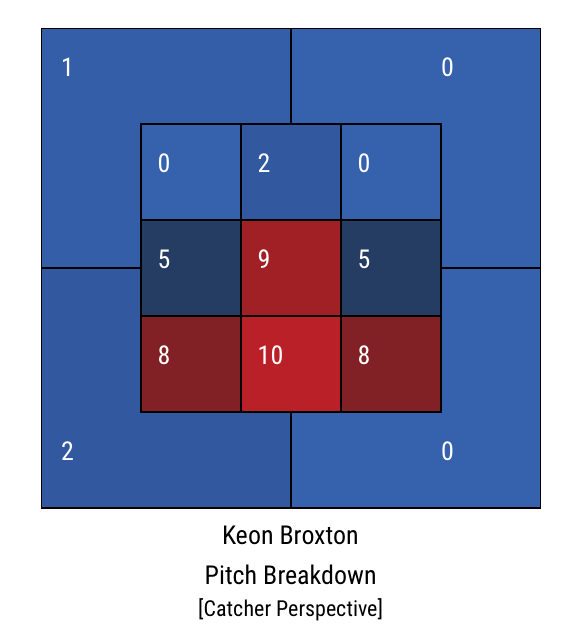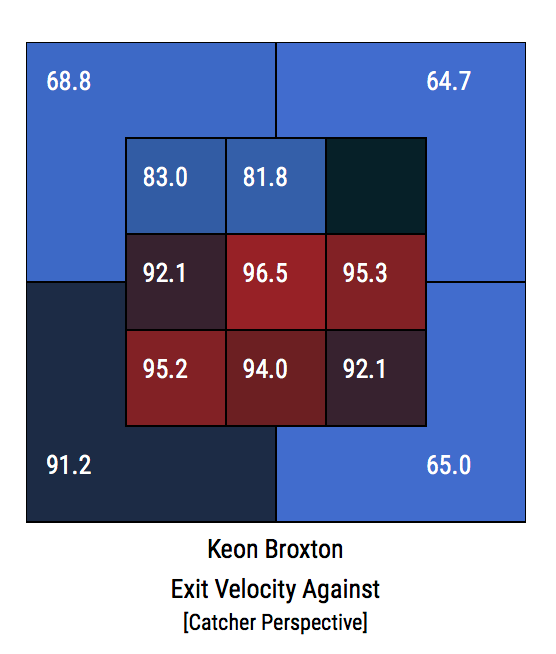Outside of Eric Thames, there may not have been a more interesting player coming into the 2017 campaign than Keon Broxton. Acquired by the Brewers in December 2015, Broxton broke onto the scene in 2016. He slashed .242/.354/.430 in 244 plate appearances, accumulating a 1.4 WARP. Drag that out over a full season and you have yourself three-plus win player. He was a Statcast legend, posting absurd exit velocities and registering strong numbers across their defensive leaderboard. While he led the league in strikeout percentage (36.1), he finished 11th in walk rate at 14.8 percent. And lastly, he stole 23 of 27 bases successfully. As a pretty big fan of his, I was quite excited to see how he could translate that success into this season.
If you were to tell me the Brewers would be five games over .500 more than halfway through May, I would have confidently told you Broxton would have been a big part of that. However, after 36 games and 131 plate appearances, his season has been a mixed bag.
On the surface, some numbers look good. He is hitting .258, 16 points higher than last year. His slugging percentage is up 28 points, as he only has two fewer doubles than he did in all of 2016. There are some good signs.
Yet there are some holes in his game that are holding him back from his potential. While his batting average and slugging are up, his on-base percentage is down 33 points. His strikeout percentage, which was already a major detriment to his game, is up two points. His walk percentage, which helped alleviate the high strikeout rate, is down eight points. He has been caught four times on the bases, already as many times as last year.
His fielding, something I was very excited about coming into this year, has digressed. I realize defensive stats can be a tad misleading, especially this early in the season, but it has been a hindrance. His FRAA is at -0.4, after being a positive 0.5 a year earlier (his UZR/150 and DRS mimic his FRAA, with -8.5 UZR/150 and -7 DRS). He made three of nine five-star fielding opportunities in 2016, yet has only made two of 13 this year.
So what is going on? Why has Broxton struggled so far to begin the season?
First of all, Sean Roberts of BP Milwaukee detailed some of Broxton’s plate discipline issues earlier this year. That issue still has not changed and I am here to build on that assessment.
The 6-foot-3 centerfielder got off to a horrendous start. In his first 18 games and 61 plate appearances, he hit a meager .161.230/.286, accompanied by 25 strikeouts. Striking out 41 percent of the time is, uh, hard to fathom. That is exactly what we did not want to see.
In the most recent 18 games and 70 plate appearances, that strikeout percentage has dropped down to 36 percent – so, still very bad. But Broxton has hit .344/.400/.609 with six doubles, a triple, and three home runs during that span. Before one gets too excited, those numbers have been greatly assisted due to a .528(!) BABIP.
I am going to go out on a limb and say Broxton is not as bad as his first 18 games, but he is not as good as his last 18 games.
Broxton’s plate discipline has seemed to disappear. As I mentioned earlier, it was much easier to swallow that strikeout rate when he was walking. But those walks have gone away. Below, Broxton’s swings/pitch zone profile from 2016 and 2017 illustrate his added aggressiveness this year.
In 2016, Broxton swung at 35 percent of pitches that were off of the plate and inside (the three zones adjacent to the strike zone). So far in 2017, he has swung at 55 percent of them. Remember, these pitches are not strikes! These are balls that miss in and he is swinging at them more than half of the time this year.
And as for balls that are thrown beneath the strike zone, he is swinging at 52 percent of them, up 14 percent from 2016. Really, the same can be said about any part of the plate that is not in the strike zone! He is chasing pitches he should not be chasing.
Another way to look at his plate coverage and discipline this year is where in the zone he is getting his base hits. By using some of the nifty tools and search options at Baseball Savant, I have added below two more charts. The first chart is a zone breakdown of where he connected on a base hit last year, and the second chart shows the same thing for this year.
In the first visual, Broxton’s base hits came on pitches in the zone, especially down in the zone. However this season, the centerfielder is strangely accumulating many of his base hits from the lower-inner third of the zone, with some of those being out of the strike zone.
And to top this off, I figured it would be best to show Broxton’s exit velocity by individual zone from this season and the prior.
Last season, like many players in the league, Broxton demolished pitches left over the plate. What made the 27-year-old such a sexy breakout candidate coming into 2017 was the fact that he crushed the ball. His 91.7 MPH average exit velocity ranked 19th among players with at least 100 AB’s. That was ahead of guys like Chris Carter, Yoenis Cespedes, and Jose Bautista. Broxton was making fantastic contact and making that contact right over the heart of the plate. Those are all good signs.
But so far into this season, the story has been slightly different. He is still crushing pitches left over the middle of the plate, which is a very good sign. Unfortunately, many of his base hits are coming from that lower-inner portion of the plate (or off of it), where Broxton has not been able to hit the ball as hard. In the second graphic above, Broxton’s average exit velocity is only 73.1 MPH when he makes contact with a pitch out of the zone and in. While that is not extremely surprising, what is surprising is that they are turning into base hits, at least for now. My guess is that luck will not last much longer.
An even more granular and less visual way to compare 2016 and 2017 is his O-Swing (out of the zone) and Z-Swing (in the zone) percentage. During his 2016 season, Broxton swung 64 percent of the pitches in the zone and 22 percent outside of the strike zone. But this year, he is swinging at fewer pitches in the zone (60 percent) and more outside of the zone (31 percent). His ability to control the strike zone has evaporated.
As I finish writing this article, the Brewers defeated the San Diego Padres in an afternoon game. In that game, Mr. Broxton summed up my article almost perfectly. In his first two at-bats, he struck out on a combined seven pitches. The final two at-bats, he hit two singles, both that were on the inner-half of the plate (albeit both in the strike zone). The first hit was off the bat at 96.3 MPH, while the second hit exited at only 78.1 MPH. This game was a microcosm of his entire season: a lack of plate discipline, a lust for pitches thrown inside, and lucking himself into a base hit with a poor exit speed (at least one of the two hits). Yet to your average fan, the former third round pick finished the day 2-for-4 with two runs scored and a stolen base.
My hope is that Broxton reverts to his old ways of last season, which is to lay off pitches outside of the strike zone and to punish balls that come over the middle of it. I realize that is basically the strategy for every baseball player that has ever stepped foot onto the diamond, but I hope you get the point. It seems as if Broxton has lucked into a few base hits, ones being outside of the strike zone and hit poorly. That will not last forever. The positive sign is that he still can hit the ball very hard when a mistake is thrown over the plate. It just comes down to whether or not Broxton chooses to only swing at those, or continues to chase.
